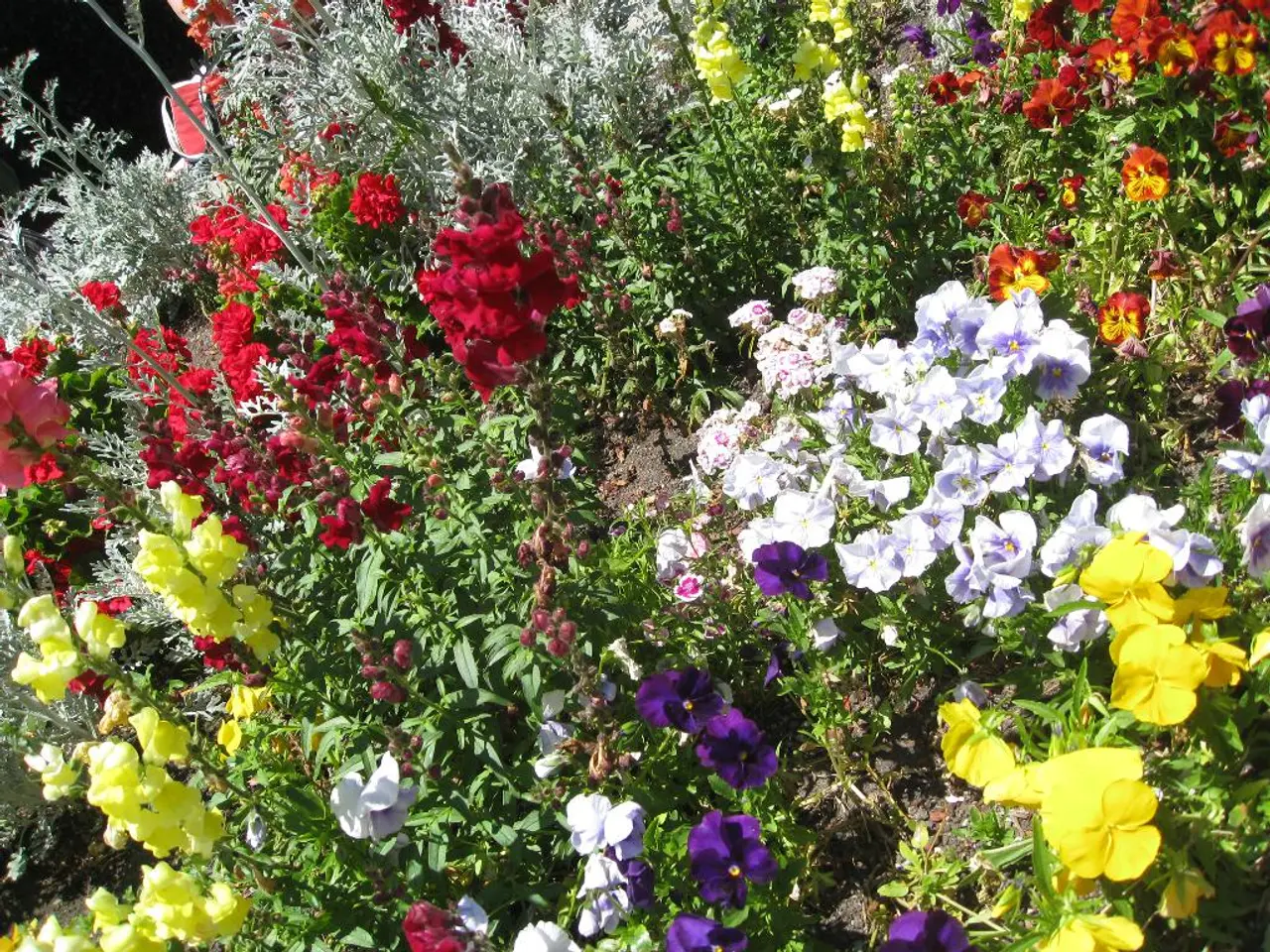Blooming Beauties: 15 Wild American Flowers Perfect for Your Summer Floral Paradise
Gardening enthusiasts, take note! We've compiled a list of 15 native American wildflowers that are perfect for beginner gardens. These hardy, low-maintenance plants are adaptable, easy to grow, and offer numerous ecological benefits.
1. Blue Vervain (Verbena hastata)
Hardy in USDA zones 3-8, this plant thrives in moist soils and tolerates full sun to full shade. Growing 2-4 feet tall, it boasts purplish-blue flower spikes that bloom midsummer to early fall. Self-seeding makes it great for rain gardens, and it attracts a variety of pollinators.
2. Desert Mallow (Sphaeralcea ambigua)
Suitable for dry, rocky, or sandy soils in zones 6-9, Desert Mallow thrives in full sun with low water needs. Its bright orange-red flowers bloom multiple seasons, attracting bees and butterflies. This plant is very heat and drought tolerant, making it a low-maintenance addition to your garden.
3. Tickseed (Coreopsis spp.)
Growing well in zones 4a-10b, Tickseed prefers most well-drained soils and full sun but tolerates partial shade. It produces bright yellow daisy-like flowers from early summer to frost, self-seeds readily, and supports pollinators.
4. American Agave (Agave americana)
Thriving in zones 7-11, American Agave prefers well-draining sandy soil and hot sun. This xerophyte stores water, making it very drought tolerant. Once established, it produces a large structural plant with dramatic flowering once in its long lifetime. It's an excellent choice for water-wise gardens.
5. Black-eyed Susan (Rudbeckia hirta)
Tolerant of drought, poor soils, and full sun, Black-eyed Susan boasts bright yellow flowers with dark centers that attract pollinators.
6. Purple Coneflower (Echinacea purpurea)
Hardy and drought tolerant, Purple Coneflower blooms summer to fall and attracts bees and butterflies. Its attractive flowers have medicinal qualities.
7. Wild Bergamot (Monarda fistulosa)
Easy to grow in moderate moisture and full sun to part shade, Wild Bergamot is an aromatic plant that attracts bees, hummingbirds, and butterflies.
8. Butterfly Weed (Asclepias tuberosa)
Butterfly Weed prefers dry, well-drained soils and full sun. Its bright orange flowers are essential for monarch butterflies.
9. Wild Lupine (Lupinus perennis)
Prefers sandy soil and full sun, Wild Lupine features purple flowers that fix nitrogen, benefiting soil health.
10. Bluebells (Mertensia virginica)
Prefers moist, shaded areas, Bluebells bloom early spring with blue bell-shaped flowers.
11. Columbine (Aquilegia canadensis)
Tolerating various conditions, Columbine prefers partial shade. Its red and yellow flowers attract hummingbirds.
12. Coreopsis verticillata (Threadleaf Coreopsis)
Drought tolerant and growing in full sun with well-drained soil, Threadleaf Coreopsis boasts fine textured foliage and bright yellow flowers.
13. Showy Goldenrod (Solidago speciosa)
Easy to grow in full sun or light shade, Showy Goldenrod offers late-season yellow flowers that attract pollinators.
14. Prairie Smoke (Geum triflorum)
Tolerant to drought, Prairie Smoke prefers well-drained soil and full sun. Its unique pink flowers with fluffy seed heads are a beautiful addition to any garden.
15. Mountain Bluet (Centaurea montana)
Tolerant of dry conditions and poor soils, Mountain Bluet blooms in spring and early summer with blue, thistle-like flowers.
These wildflowers are great for beginner gardens due to their hardiness, low maintenance, ecological value, visual appeal, and adaptability. They brighten your garden with long-lasting, colorful blooms while promoting local ecosystems and requiring minimal work. So, why wait? Start cultivating your very own native wildflower garden today!
- In addition to the native wildflowers mentioned for the beginner garden, consider incorporating perennials like the Purple Coneflower (Echinacea purpurea) for a seasonal pop of color.
- To add a touch of decor and diversity to your garden, annuals such as Black-eyed Susan (Rudbeckia hirta) and Tickseed (Coreopsis spp.) provide vibrant flowers that attract pollinators and entice bees and butterflies.
- When organizing your garden, grouping wildflowers by their growing requirements can enhance their growth and ensure an appealing lifestlye for home-and-garden enthusiasts.
- With flowering plants like the Blue Vervain (Verbena hastata), Wild Bergamot (Monarda fistulosa), and Columbine (Aquilegia canadensis), your garden will provide a natural habitat for pollinators enriching the local ecosystem.
- To create a cohesive design, choosing native wildflowers that bloom at different times like the Desert Mallow (Sphaeralcea ambigua), Showy Goldenrod (Solidago speciosa), and Mountain Bluet (Centaurea montana) will ensure continuous color in your garden throughout the seasons.
- The presence of American Agave (Agave americana) and Prairie Smoke (Geum triflorum) in your natively-inspired garden will not only generate a relaxing aesthetic appeal, but also serve as stunning statement pieces for your home-and-garden decor.



